Seasonal Garden Design: Lessons from Chinese Practices
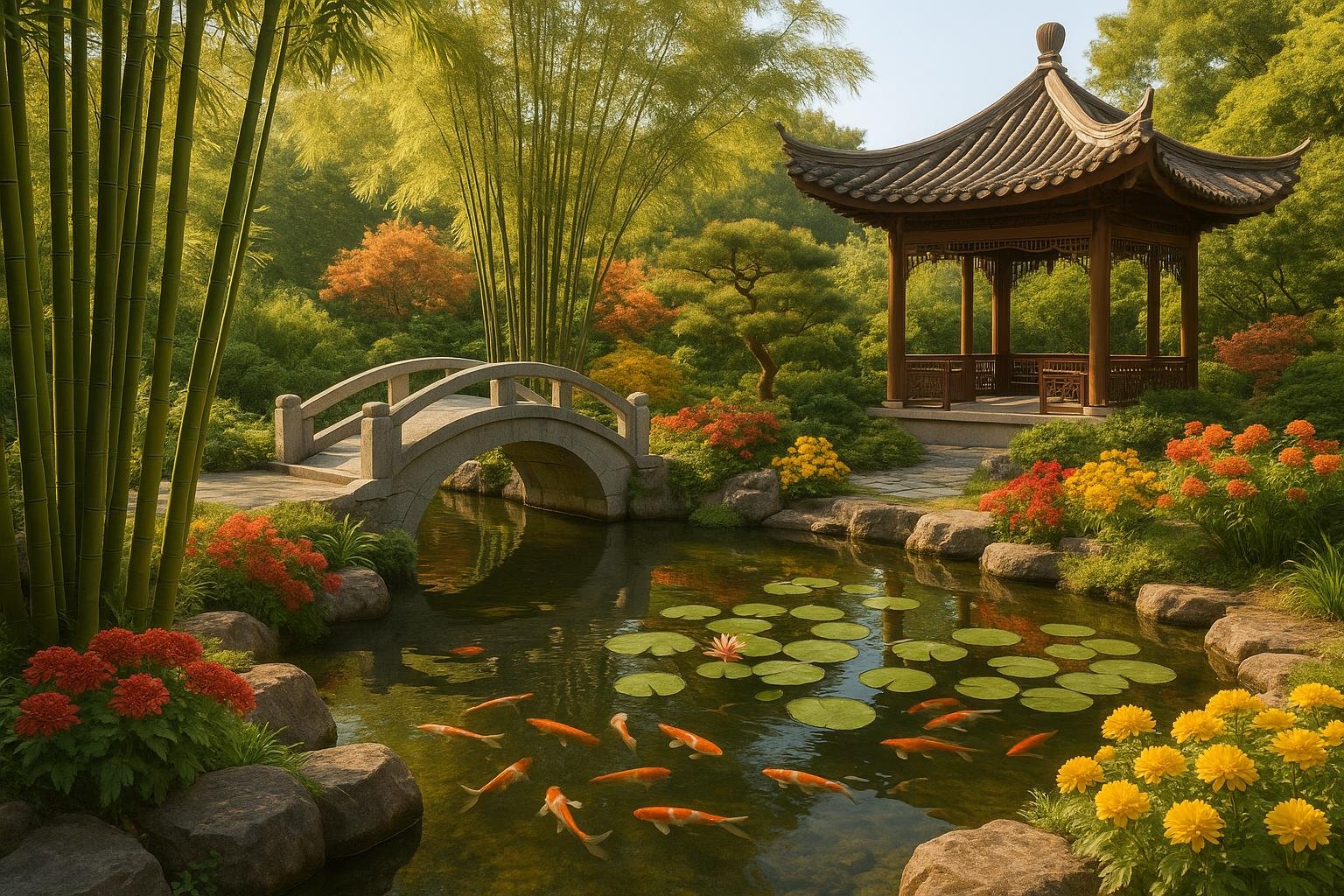
Want a garden that looks stunning all year? Seasonal garden design, inspired by ancient Chinese practices, blends nature and philosophy to create outdoor spaces that thrive in every season - spring, summer, fall, and winter. By combining plants, water, rocks, and symbolic structures, you can achieve balance and beauty no matter the time of year.
Key Takeaways:
- Seasonal Appeal: Use plants like plum blossoms in spring, lotus in summer, chrysanthemums in fall, and evergreens in winter for year-round interest.
- Core Elements: Incorporate water features, rocks, and symbolic plants (e.g., bamboo for strength, pine for longevity).
- Borrowed Scenery: Frame views of nearby landscapes to expand your garden’s feel.
- Harmony: Balance natural elements (plants, water) with structures (pavilions, pathways) using Taoist and Confucian principles.
- Modern Tools: AI tools like AIGardenPlanner help design gardens tailored to your location and climate.
Start small: Even balconies or patios can reflect these principles with clever plant choices and mini water features. Whether you’re a beginner or a seasoned gardener, these timeless methods can transform your space into a peaceful retreat.
Architecture of Seasons, Moods and Emotions - Chinese Gardens Design Principles

Core Principles of Chinese Seasonal Gardens
Chinese seasonal gardens are deeply rooted in philosophical traditions that shape their design, creating spaces that resonate with balance and harmony across all seasons.
Taoism and Confucianism in Garden Design
Two key philosophies - Taoism and Confucianism - guide the timeless elegance of Chinese gardens. These ideas provide the framework for crafting spaces that feel naturally peaceful and balanced throughout the year.
Taoism emphasizes living in harmony with nature and following its rhythms. As Laozi, the founder of Taoism, expressed:
"The earth moves according to nature, the saints act upon nature, and nature is Tao".
This philosophy inspires gardens that embrace natural forms - letting plants grow freely, designing paths to follow the land's natural curves, and incorporating water features that mimic flowing streams.
Confucianism, on the other hand, focuses on the "unity between human beings and nature". It encourages a structured harmony where human-made elements blend seamlessly with the natural environment. For instance, classical Chinese courtyard homes reflect Confucian order, while their gardens often embody Taoist spontaneity. Together, these philosophies balance organized elements - like defined planting beds or stone pathways - with the organic beauty of nature.
These guiding principles lay the foundation for the use of symbolism and spatial techniques that further enhance a garden's seasonal charm.
Plant and Structure Symbolism
Symbolism plays a significant role in Chinese gardens, connecting their design to the changing seasons. Plants and structures are chosen not only for their aesthetic appeal but also for the deeper meanings they convey, enriching the garden’s atmosphere.
Some key symbolic plants include:
- Pine trees: Represent endurance and longevity.
- Bamboo: A symbol of strength and flexibility.
- Plum blossoms: Signify resilience and renewal.
- Chrysanthemums: Represent nobility and long life.
- Lotus flowers: Stand for purity and enlightenment.
Structures also carry symbolic weight. For example, moon gates - circular openings in walls or fences - symbolize the moon and create framed views that evoke mystery and transition.
The poet Bai Juyi beautifully encapsulated this symbolic approach:
"The bamboo has an empty heart, and it shall be my teacher for modesty".
When designing your seasonal garden, consider both the practical needs of plants and their symbolic meanings to create a space that resonates on multiple levels.
Beyond symbolism, the principle of borrowed scenery enhances the garden’s connection to its surroundings.
Borrowed Scenery and Seasonal Views
Borrowed scenery, or jièjǐng, is a core Chinese garden design concept that integrates views of the surrounding landscape, making even small gardens feel expansive and connected to the world beyond. This technique not only enhances the sense of space but also ties the garden to the seasonal changes in the environment.
The 17th-century garden master Ji Cheng described this idea:
"If one can take advantage of a neighbor's view one should not cut off the communication, for such a 'borrowed prospect' is very acceptable".
There are four types of borrowed scenery that can add depth to your seasonal garden:
- Distant: Frame far-off features like mountains or tall trees with foreground plantings.
- Adjacent: Incorporate nearby elements, such as buildings or mature trees, into the design.
- Upward: Use sky reflections in water features to draw the eye upward.
- Downward: Highlight rocks, ponds, or textured ground surfaces as seasonal focal points.
A stunning example is the moon gate at Slender West Lake in Yangzhou, which perfectly frames the Bridge of the Five Pavilions.
Modern tools like AIGardenPlanner can also assist in identifying optimal sightlines and suggesting plantings that enhance these borrowed views. By combining traditional principles with contemporary tools, you can create a garden that feels both timeless and connected to its surroundings.
Design Elements for Year-Round Interest
Creating a garden that remains captivating throughout the year involves blending permanent features with seasonal plantings. Drawing inspiration from Chinese garden design can help you craft an outdoor space that feels alive and engaging, whether it's cloaked in winter's quiet or bursting with summer's vibrancy.
Water and Rock Features
Water and rocks are the heart of Chinese seasonal gardens, symbolizing the harmony between movement and stillness. As an old Chinese saying puts it:
"Garden's attraction is nothing but two things – water and mountains".
Water features bring energy to the garden while serving practical purposes year-round. Ponds and streams reflect the changing colors of the seasons and help moderate temperatures. When planning these elements, think about how they’ll look in every season - a pond that mirrors spring blossoms can later capture autumn's warm tones or winter's stark contrasts. Position water features to catch natural light, and pair them with carefully arranged rocks to mimic natural landscapes.
Rocks also play a vital role in Chinese gardens, offering visual interest even when plants are dormant. Stones from Lake Tai, for example, are celebrated for their intricate shapes and natural perforations. Choose rocks with unique textures and patterns to act as focal points and to complement water features. This interplay between water and stone is a hallmark of traditional Chinese garden design.
Next, let’s explore how plant choices can enhance this dynamic foundation throughout the seasons.
Plant Selection for Each Season
Selecting plants that provide year-round beauty while honoring Chinese symbolism is key. The 17th-century Chinese writer Zhang Chao captured this sentiment beautifully:
"Planting flowers serves to invite butterflies, piling up rocks serves to invite clouds, planting pine trees serves to invite the wind… planting banana trees serves to invite the rain, and planting willow trees serves to invite cicadas".
In spring, early bloomers like plum blossoms symbolize renewal and resilience. These flowers, which often appear while winter still lingers, can create a striking transition into the warmer months. Chinese Redbud (Cercis chinensis), with its heart-shaped leaves and delicate flowers, is another excellent springtime choice.
Summer brings dramatic additions like lotus flowers, which thrive in water features and symbolize purity. Bamboo groves not only provide cooling shade but also add a calming rustle to the garden. The Seven Son Flower (Heptacodium miconioides) offers both summer blooms and bark that becomes a point of interest in winter.
As fall arrives, chrysanthemums take center stage with their vibrant colors and enduring presence. Zawadzki Chrysanthemum (Chrysanthemum zawadskii), highlighted by the Missouri Botanical Garden, is a reliable choice for temperate climates, providing a brilliant contrast to evergreen backdrops.
Winter doesn’t have to mean a dull garden. Evergreens like pine trees maintain structure and continuity, while certain deciduous plants add texture and visual interest against snowy or gray skies.
For guidance on selecting plants that suit your climate and complement your garden's design, tools like AIGardenPlanner can help you visualize seasonal combinations and find varieties suited to your location.
Now, let’s look at how architectural elements can enhance these seasonal displays.
Garden Structures for Seasonal Function
Structures in Chinese gardens are designed to harmonize with the landscape, enhancing both beauty and functionality throughout the year. These elements frame seasonal highlights and create balance, ensuring the garden remains engaging in every season.
Pavilions, for example, serve as sheltered spaces for enjoying the scenery. In spring, a pavilion might provide a peaceful spot to admire blossoming trees, while in summer, it offers a cool retreat with views of shimmering water. The Humble Administrator's Garden in Suzhou is a prime example, featuring forty-eight structures that offer unique perspectives for each season.
Covered walkways and galleries connect different areas of the garden, protecting visitors from the elements while guiding them through spaces that evoke distinct seasonal moods. Decorative windows and doors frame shifting scenes, from winter's stark beauty to summer's lush greenery. Bridges, too, add charm, offering elevated views of water reflections and evoking the pastoral landscapes that have inspired classical Chinese designs.
When incorporating these structures, think about how they’ll hold up under various weather conditions and how they can enhance your garden’s connection to the surrounding environment year-round.
sbb-itb-4d6a8dd
🚀 Ready to Reinvent Your Garden?
Join thousands of homeowners who have transformed their gardens using our AI design tool. Upload one photo to explore endless possibilities.
Get your AI garden designs →Applying Chinese Methods to Modern Gardens
You don’t need sprawling estates or ancient traditions to bring the charm of Chinese garden design into your life. These timeless principles can be tailored to fit modern lifestyles, whether you’re working with a cozy balcony or revamping a backyard. At the core of these designs lies the philosophy of achieving balance and harmony - something that can transform any space into a peaceful retreat.
Chinese Principles in Small Spaces
Even in the tightest urban spaces, Chinese garden principles can work wonders. The focus on creating intimate, serene environments makes them perfect for balconies, patios, or small courtyards. By incorporating the five elements - wood, fire, earth, metal, and water - you can craft a space that feels balanced and alive. For instance, a bamboo plant in a large pot not only adds privacy but also brings gentle movement and soothing sounds. A small fountain or even a ceramic bowl with lotus flowers can introduce the water element, adding a calming touch.
Vertical gardening is another way to make the most of limited space. Climbing vines on trellises echo the layered planting style of traditional gardens, while bonsai trees placed on tables or pedestals add a touch of artistry without taking up much room. Shaded areas can come to life with the lush greenery of Chinese ferns, and even a tiny balcony can feature a winding path - like an S-curve layout - to guide the eye and encourage the flow of Qi. Seasonal touches, such as peonies in spring, chrysanthemums in fall, or plum trees for early winter blooms, can add a dynamic, evolving character to your space.
AI Tools for Seasonal Garden Planning
Modern technology has made it easier than ever to plan and maintain a garden inspired by Chinese design principles. AI-powered tools like AIGardenPlanner allow you to visualize how your garden will change with the seasons before you even start planting. By analyzing photos of your space, these platforms can suggest layouts that combine traditional elements with your local climate and growing conditions.
One standout feature, the AI Plant Advisor, helps you choose plants that are well-suited to your environment, ensuring they thrive year-round. It also creates detailed maintenance schedules, breaking down tasks like planting, pruning, and dividing into manageable weekly steps. For professional landscapers, these platforms offer high-resolution design downloads and in-depth growing guides, making it easier to bring artistic concepts into reality. This blend of technology and tradition allows for seamless integration of local plants into a garden grounded in Chinese aesthetics.
Combining Chinese Design with Local Plants
Blending Chinese garden principles with native plants is a practical and sustainable way to create a harmonious outdoor space. Native plants are naturally suited to your region’s climate and soil, which makes them easier to maintain and more eco-friendly. But this doesn’t mean you have to forgo the symbolic plants often associated with Chinese gardens. Instead, find local alternatives that capture a similar look or meaning.
For example, in the American South, Southern magnolias can provide the same early-season drama as plum blossoms, while native asters offer vibrant fall colors reminiscent of chrysanthemums. Combining local flora with traditional symbolic plants results in a garden that feels authentic yet fits seamlessly into its environment. To keep maintenance manageable, consider incorporating ornamental grasses or drought-tolerant perennials that provide seasonal interest without requiring constant care.
The goal is to balance nature and artistry. Thoughtful planning and placement, guided by feng shui principles, can enhance the flow of positive energy, creating a serene space where visitors can unwind and connect with their surroundings.
Key Takeaways
Chinese seasonal garden design turns outdoor spaces into tranquil retreats. By blending traditional principles with modern tools, these gardens adapt to the seasons and reflect the local environment, creating a space that feels both timeless and personal.
Main Lessons from Chinese Seasonal Design
At its heart, Chinese garden design is all about achieving balance and harmony with nature. It brings together contrasting elements - light and shadow, solid and empty spaces - to reflect the yin-yang dynamic that governs natural cycles. Seasonal changes play a key role: winter embodies a quiet, yin quality, while spring and summer burst with the vibrant energy of yang.
Instead of focusing solely on colorful flowers, these gardens prioritize structure, balance, and texture. For instance, artfully placed rocks can evoke the grandeur of distant mountains, and framing views of the surrounding landscape can make even compact spaces feel expansive.
These timeless principles provide a foundation for incorporating technology into garden planning.
How Technology Supports Garden Principles
Modern tools like AIGardenPlanner bridge ancient garden wisdom with today’s needs. These platforms analyze factors like local climate, soil conditions, and sunlight patterns to create tailored garden designs that honor Chinese principles while adapting to your specific environment. Plus, user input and global data help refine these recommendations over time.
With these ideas in mind, you’re ready to take the first steps toward creating your own seasonal garden.
Steps to Start Your Seasonal Garden
Start by grounding your design in Chinese garden philosophy. Begin by evaluating your space - sketch out ideas and note important details like sunlight exposure, soil type, and your climate zone. A water feature is a classic focal point in Chinese gardens; it doesn’t have to be large - a simple fountain can work beautifully when placed where it can be appreciated from different angles.
Design your garden as a journey by incorporating curved paths and strategically placing features so each turn reveals something new. When choosing plants, focus on species that provide structure and interest throughout the year. Bamboo is a great option for adding movement and sound, but be sure to select a non-invasive variety.
To create a balanced and serene environment, mix areas of dense planting with open spaces. Combine vertical elements like trees with low ground covers to achieve a harmonious interplay of shapes and textures. This thoughtful design approach brings the peaceful, restorative essence of Chinese gardens to life.
FAQs
How can I apply Chinese garden design principles to a small space like a balcony or patio?
Transforming a small balcony or patio using Chinese garden design principles can turn it into a serene escape. Start by emphasizing balance and symbolism with plants that fit the traditional aesthetic. Bamboo, flowering perennials, or small, compact trees are excellent choices. Use pots and planters to create layers and define spaces, mimicking the natural flow of a larger landscape.
Add decorative touches like rocks, small water features, or ornamental stones to bring a sense of calm and visual charm. To introduce a feeling of movement, consider arranging pathways or stepping stones in a zigzag pattern - a signature element in Chinese garden design. Keep the layout simple and uncluttered by spacing larger plants carefully and filling gaps with smaller ones. This thoughtful arrangement mirrors the harmony and balance found in nature.
What are the advantages of using native plants in a Chinese-inspired garden design?
Using native plants in a Chinese-inspired garden design has plenty of practical and aesthetic benefits. These plants are already adapted to the local climate and soil, which means they require less water, fertilizers, and pesticides to thrive. Plus, they play a crucial role in supporting local ecosystems by offering food and shelter to native birds, butterflies, and other wildlife.
This approach also ties in beautifully with the Chinese philosophy of living in harmony with nature, fostering a sense of balance and connection in your garden. Native plants bring an added layer of charm with their seasonal transformations, ensuring your landscape feels both dynamic and authentic. By opting for native plants, you’re not just creating a visually stunning garden - you’re also making an eco-friendly choice that reflects cultural values.
How can AIGardenPlanner help create a garden inspired by traditional Chinese design?
AIGardenPlanner: Designing a Garden with Traditional Chinese Elegance
AIGardenPlanner simplifies the process of creating a garden inspired by the timeless beauty of traditional Chinese design. With its AI-driven tools, you can upload photos of your outdoor space and receive tailored garden layouts that focus on balance, harmony, and symbolism - the core principles of Chinese garden aesthetics.
Beyond layout suggestions, the platform offers personalized plant recommendations based on your local climate, soil type, and individual preferences. This ensures your garden not only flourishes but also remains true to its traditional essence. By combining ancient design philosophies with cutting-edge technology, AIGardenPlanner helps you craft a peaceful, enduring outdoor retreat.
🎨 Visualize Your Dream Garden Today!
Transform any outdoor space into a professional landscape design in minutes. Just upload a photo, choose your style, and let our AI do the rest.
Start your garden transformation now →Related posts
Related Articles

Can You Use Garden Soil for Your Lawn? Factors to Consider
Discover the pros and cons of using garden soil on your lawn. Learn about the differences between garden soil and lawn soil to make an informed decision. Find out if garden soil is suitable for your lawn.
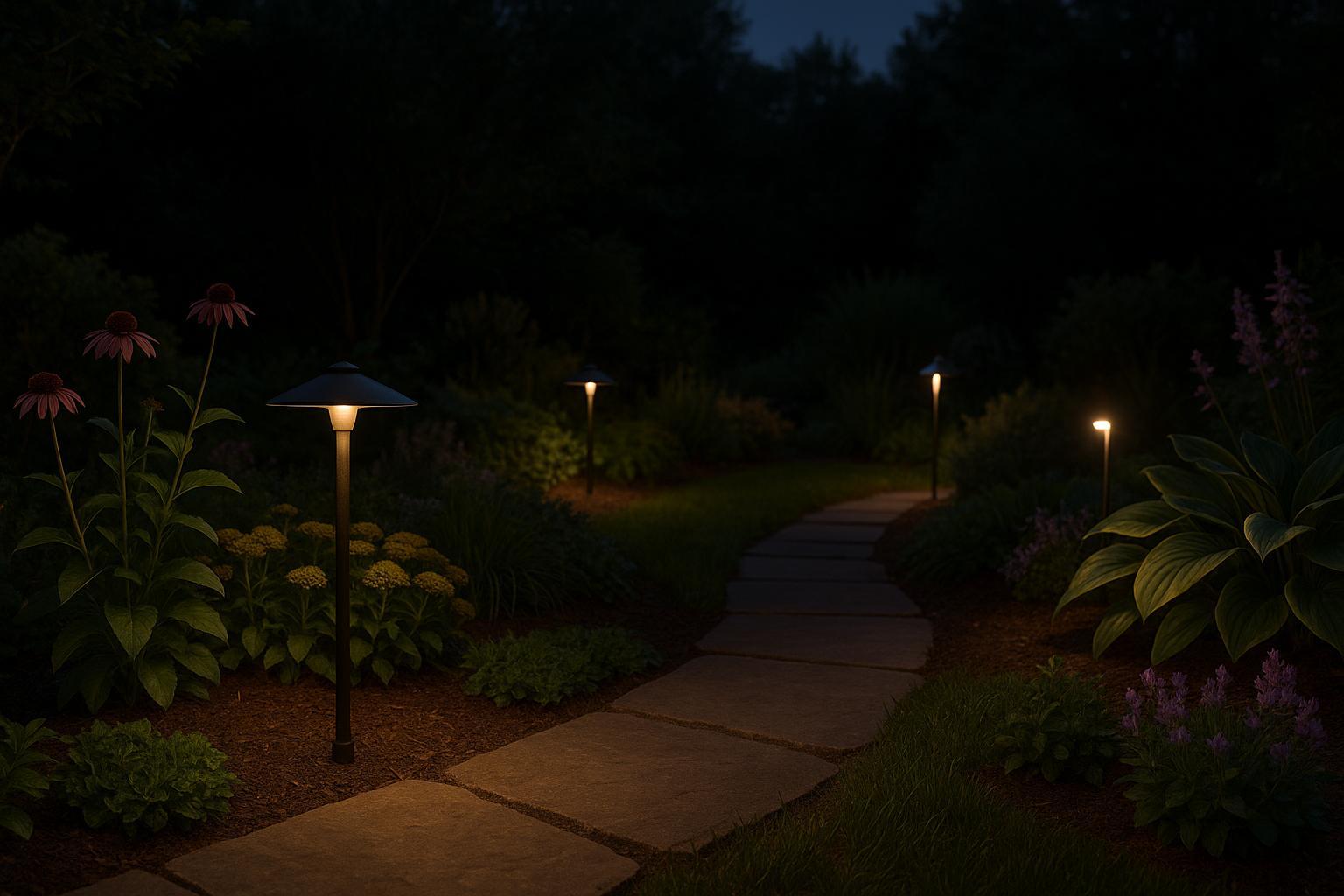
7 Common Low Voltage Lighting Problems
Explore common low voltage lighting problems and their solutions to ensure your outdoor lighting system remains efficient and beautifully illuminated.
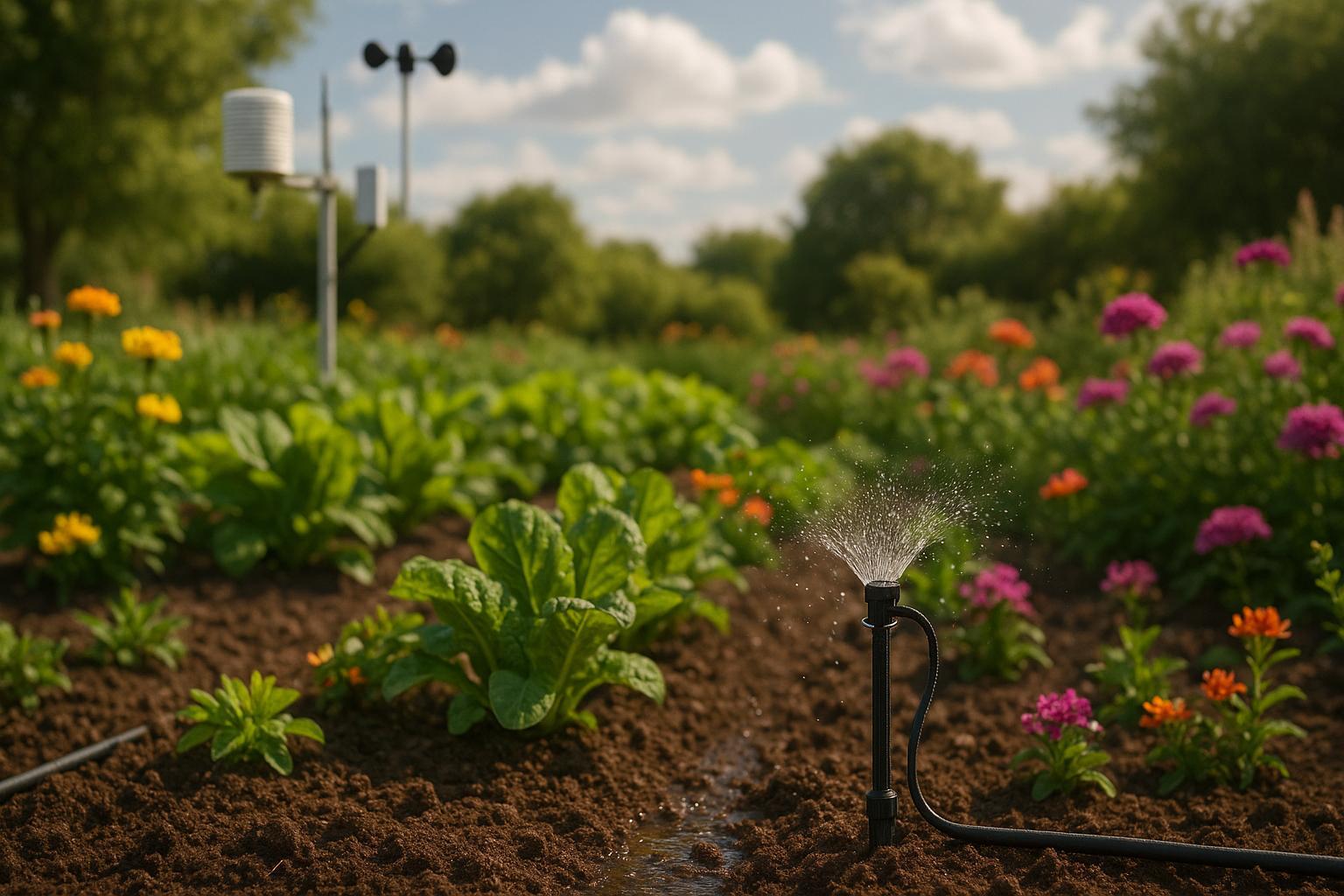
AI Tools for Seasonal Irrigation Forecasting
AI irrigation systems optimize water use and plant care by analyzing weather and soil conditions, ensuring healthier gardens and cost savings.
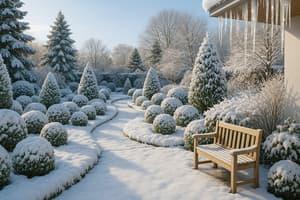
AI Tools for Designing Snow-Themed Gardens
Learn how AI tools simplify the creation of enchanting snow-themed gardens tailored to your climate and design preferences.
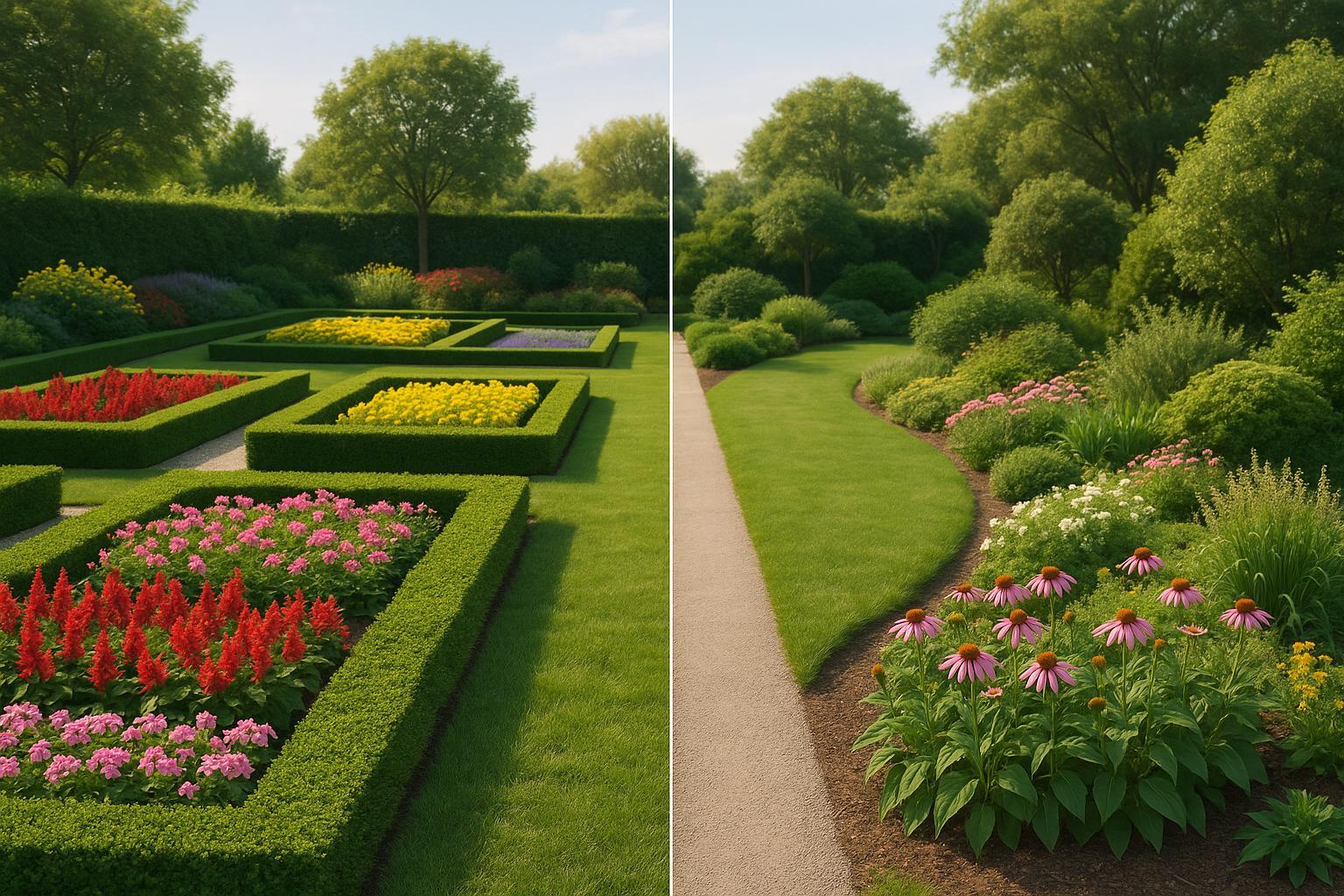
AI Garden Layouts vs. Traditional Design Methods
Explore the pros and cons of AI garden design tools versus traditional design methods, and find the best approach for your project needs.

AI Tools for Seasonal Planting Schedules
Explore how AI tools can create personalized planting schedules and improve your gardening experience with tailored recommendations and smart calendars.